|
|
|
![]() back to "The Grand Tour" index
back to "The Grand Tour" index
Neville Malkin's "Grand Tour" of the Potteries
buildings north of the Potteries
![]()
![]()
![]()
next: Gothic shops and
houses, Audley
previous: Moreton House,
Wolstanton
contents: index of buildings north of the Potteries
|
No 28 - St.
Margaret's Church, Wolstanton "Wolstanton, a village and a parish in Staffordshire.
The
village is l½ mile N of Newcastle-under-Lyme, and 2 miles WSW of
Stoke-upon-Trent. It has a post, money order, and telegraph office (T.S.O.)
under Stoke-upon-Trent.
The Comprehensive Gazetteer of England and Wales, ed J.H.F.Brabner, 1895 Now a grade II listed building with the following description..... Mainly of 1860, but incorporating substantial amounts of medieval building, including north tower and spire. Largely by Ward and Son, with chancel by Salvin. Sandstone rubble, coursed and squared, tiled roof with scalloped bands and ridge cresting. North tower, nave, 2 aisles, chancel. Decorated style. Squat 3-stage tower with parapet and pinnacles and recessed octagonal spire. Decorated lights with deep splays in lower stage and to bell-chamber. Inserted Victorian doorway in east wall. North vestry to chancel, and 3-light Decorated east window with fluid tracery. Small window in east wall of nave above chancel roofline. 2-light Decorated aisle windows, heavy buttresses, corbel table. Heavy south porch with angle buttresses and ball-flower decoration to moulded archway. Foliate hood mould with cresting. INTERIOR: nave arcades of 4 bays with octagonal shafts. Hammer beam roof, wood traceried chancel screen.
Late C19 stained glass, and tiled floors. Series of
monuments to members of Sneyd family in chancel: wall tablet to John
Sneyd, 1710, pedimented with urn and flanking cherubs; Sir William and
Anne Sneyd, 1571, an alabaster chest tomb with recumbant effigies and 11
children represented in high relief round the base. Re-cut stone canopy
with strapwork and arms; two other tablets to Radulph and William Sneyd
(1729).
|
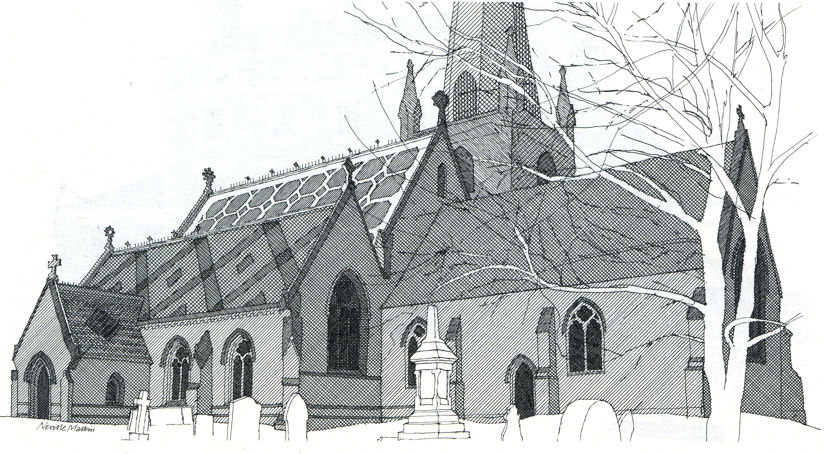
St. Margaret's Church,
Wolstanton
pen drawing by Neville Malkin -
April
1975
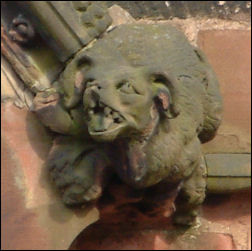
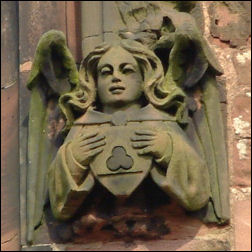
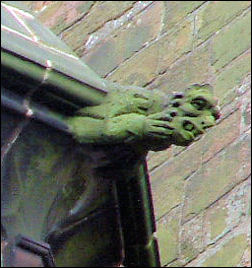
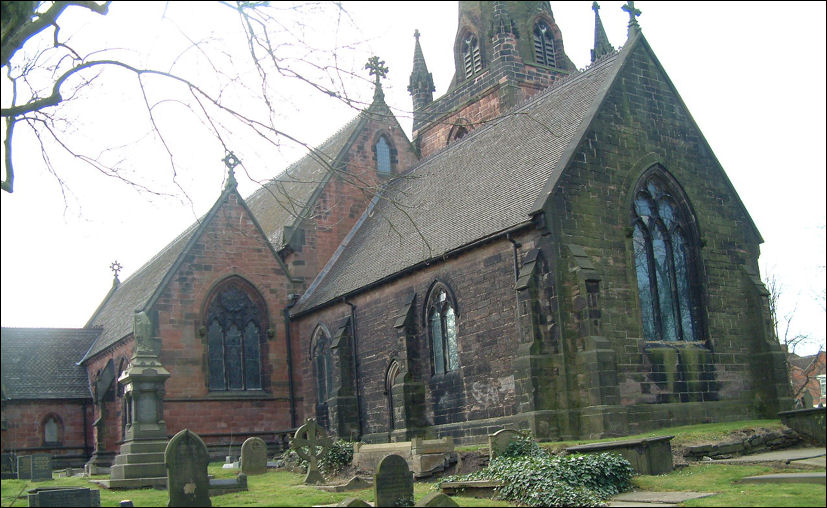
St. Margaret's Church,
Wolstanton
- April 2009
|
"The
red stone Parish Church of Wolstanton, dedicated to St. Margaret,
stands in an elevated position in a churchyard of about two acres. Its
lofty steeple, a landmark for miles, stands unusually, on the north
side of the church and consists of a tower some 78ft. high, surmounted
by a spire that rises a further 65ft. A set of six bells, cast in 1714
and installed during the early 18th century, are said to have been
removed from the church at Trentham. The west front is particularly
ornate and asymmetrical. The large chancel contains many interesting features, and several of the monuments are in memory of the Sneyd family. The most significant is an alabaster altar tomb erected in memory of Sir William Sneyd and his wife, whose recumbent effigies lie on the slab of the tomb. The knight is clad in armour with his plumed helmet serving as a pillow, and his lady is dressed in a costume of the Elizabethan period; their 15 children are represented in panels on the front and at the foot. The origins of this church are probably Saxon, but most of the main plan and building now visible was erected in 1623 and trimmed with a profusion of battlements. It appears that further major alterations by Ward and Sons took place in 1859-60 when the whole of the roof was reconstructed and covered with interesting tile work. The registers of Wolstanton commence in 1628, when marriages were conducted before a magistrate according to an Act of Cromwell's Parliament. The banns were then published on three successive market-days at Newcastle, or on three successive Sundays in the church. At one time the Parish of Wolstanton was quite extensive, and included Knutton, Chesterton, Chatterley and Bradwell in the south, with Tunstall, Chell, Oldcott, Ranscliff, Brieryhurst, Stadmerslow, Thursfield and Wedgwood in the north. St. Wolstan, Bishop of Worcester prior to the Norman Conquest, is believed to have been a native of Wolstanton and a direct descendant of the Saxon, Wolstan, who, supposedly, gave his name to the village. St. Wolstan was formerly a monk, afterwards Prior of Worcester Abbey, and raised to bishop in 1062 by Edward the Confessor. He assisted at the coronation of William the Conqueror in 1066 and founded the present cathedral of Worcester in 1084. He was quite a remarkable man but deficient in the secular learning of the foreign church brought into England by William; in a Synod held at Westminster in 1074, sentence of deposition was passed against him. However, he refused to surrender his staff and ring, except at the shrine of King Edward who had bestowed them. Having placed his staff upon the tombstone, he changed into a monk's habit and went into the chapter house. The Archbishop immediately sent a messenger to collect the staff but he could not remove it from the stone; neither could the King nor the Archbishop. Wolstan was immediately sent for and the staff readily submitted to his touch. This was considered something of a miracle, and his episcopal dignity was restored and held until his death in 1095 at the age of 87. Wolstan was the favourite saint of King John, in whose reign he was canonised; the King gave directions for his body to be interred by the side of the Saint."
|
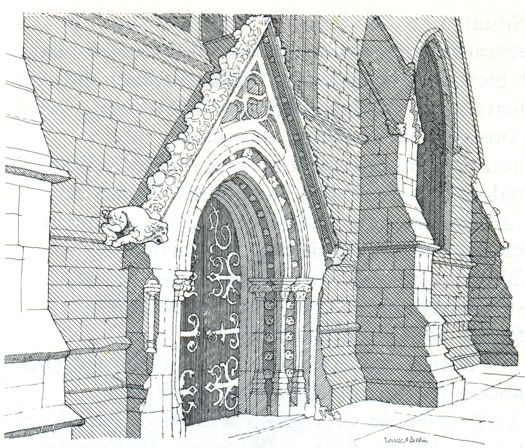
previous: Moreton House, Wolstanton
contents: index of buildings north of the Potteries
back to "The Grand Tour" index